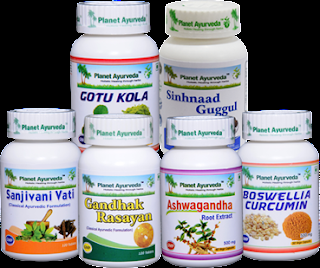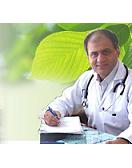ABSTRACT
Scleroderma also known as systemic sclerosis is characterised as a rare, chronic, autoimmune disease in which normal tissue mass is replaced with thick, dense and fibrous tissue mass. In scleroderma patients, the immune system triggers other cells to produce excessive collagen protein leading to deposition in the skin and organs causing thickening and hardening as seen in the scarring process. Scleroderma also can affect other parts of the body including the Blood circulation system, Musculoskeletal system, Cardiovascular system, Gastrointestinal tract, Respiratory system and Renal system. Scleroderma in its severe forms can be threatening to life. Let's discuss it in detail!

ETIOLOGY OF SCLERODERMA
Researchers do not know the exact cause of scleroderma, but several factors that may contribute to the disease are suspected
● Genetic makeup
Genes can increase the chance for certain people to develop scleroderma and play a role determining the type of scleroderma they have. This disease cannot be inherited nor is it passed from parent to child like some genetic diseases but first-degree relatives of people with scleroderma are at higher risk of developing scleroderma than the general population.
● Environment
Exposure to environmental factors such as viruses or chemicals, may trigger scleroderma.
● Immune system changes
Abnormal immune or inflammatory activity in your body triggers cell changes that cause the production of too much collagen.
● Hormones
Women develop most types of scleroderma than men as there are hormonal differences between women and men might play a part in the disease.
● Auto-immune disease
Scleroderma can occur with other AI diseases such as SLE and Polymyositis.
SYMPTOMS OF SCLERODERMA
Symptoms of scleroderma depends on the system involved and are as follows
● Skin symptoms
involve thickening, hardening or tightening of the skin, hair loss, decreased sweating, dryness, itching, skin colour changes or salt and pepper look to the skin, sores and pitted scars on the fingers and calcium deposits beneath the skin.
● Cardiovascular symptoms
involve Raynaud's phenomenon, healed pitting ulcers on fingertips, telangiectasis, palpitations, hypertension, and congestive heart failure.
● Digestive symptoms
involve gastroesophageal reflux disease, indigestion, bloating, loss of appetite, constipation, sicca syndrome, loosening of teeth, etc.
● Pulmonary symptoms
involve shortness of breath, chest pain, persistent cough, interstitial lung disease, etc.
● Musculoskeletal symptoms
involve muscle ache, joint pain, carpal tunnel syndrome, and weakening of muscles.
● Genitourinary symptoms
involve dyspareunia, erectile dysfunction, kidney failure, etc.
● Other symptoms
involve stroke, fatigue, calcinosis, hand paresthesias, headache, weight loss, etc.
TYPES OF SCLERODERMA
Scleroderma is divided into two types
1. Localised Scleroderma
In this type of scleroderma only the skin is affected but the effects can be serious and disabling. Localised scleroderma is further divided into two types
2. Morphea scleroderma
this is further subdivided into
(a) Circumscribed Morphea presents with single oval patches or a few patches of morphea on the skin having a typical red border and thickened pale-yellow or ivory centre. These lesions enlarge when in active state and later flattens and vanishes with proper treatment.
(b) Generalised Morphea: - Multiple patches of morphea on the head, arms, neck and trunk can be seen as tight and thick areas that can mix together.
3. Linear Scleroderma
It is commonly seen in children of age 10 and younger and presents with thick and tight bands on the face, buttocks and trunk.
4 Systemic Scleroderma
It affects the musculoskeletal system, skin, and gastrointestinal tract, renal system, Cardiovascular system, blood circulation system and respiratory system. It is further split into three types
5. Limited Scleroderma
It's the most common type of Scleroderma that leads to skin hardening and tightening in hands, fingers and forearms, or the face along with problems with the gastrointestinal tract, Raynauds, and musculoskeletal. It is also known as CREST syndrome, each letter stands for a feature of the disease:
C - Calcinosis or deposition of abnormal calcium in the skin
R - Raynaud's phenomenon
E - Esophageal dysmotility or difficulty in swallowing
S - Sclerodactyly or tightening of the skin on the fingers
T - Telangiectasias or red spots on the skin
6. Diffuse Scleroderma
- It occurs due to excess collagen production leading to thickening, dryness and irritation of the skin on fingers, hands, arms, anterior trunk, legs, and face along with the risk of serious organ damage to the gastrointestinal tract, renal system, pulmonary system, and cardiovascular system.
7. Sine Scleroderma
It causes systemic organ disease including the Raynaud's phenomenon. This does not include skin thickening and includes other symptoms of Limited and Diffuse Scleroderma.
TREATMENT OF SCLERODERMA
At present, cure for scleroderma is not available therefore controlling and managing the symptoms is encouraged. Following measures can be followed
- Solutions for skin related problems
Topical medications including moisturisers to protect the skin from dryness and to treat hardened skin. Nitroglycerin can be considered to improve blood flow so that sores in the fingers can heal. It works by soothing the smooth muscles and dilating the arteries. Nitrates can also have unwanted secondary effects such as rapid heartbeat, nausea, dizziness and blurred vision.
- Solution for digestion related problems
Antacids, proton pump inhibitors and H 2 receptor blockers are suggested in patients with heartburn and digestion related problems.
- Solution for lungs related problems
Pulmonary fibrosis or scarring of the lung tissue can be seen in scleroderma patients. Lung transplant and chemotherapy are considered as suitable options.
- Solution for joints related problems
Anti-inflammatory drugs and physiotherapy is suggested in patients with joint problems.
- Solution for Raynaud's phenomenon
Vasodilators, sildenafil, nitroglycerine patches/ointment, alpha blockers, anti-platelet drugs demonstrate a good effect. In cases of gangrene, ischemic digital ulcers, and Infected ulcers wound care and a prolonged antibiotic course is suggested.
: Cure is not available but symptoms like dry mouth can be healed by sipping on liquids and chewing gum, dry eyes can be cured with artificial teardrops.
- Solution for Kidney related problems
Angiotensin Converting Enzyme inhibitors and dialysis.
These include regular exercising that helps to maintain physical and mental health and keeps joints flexible and improves circulation, joint protection can be done by avoiding lifting of heavy objects or performing tasks that leads to strain on already affected joints, Skin protection in colder months by appropriate dressing and maintaining body warmth will benefit in keeping the blood vessels in extremities open and circulation flowing, following healthy diet - getting proper amounts of vitamins and nutrients and avoiding foods that aggravate stomach problems, Stress management and getting proper sleep and rest.
AYURVEDIC APPROACH ON SCLERODERMA
In ayurveda, Scleroderma is known as Uttana Vatarakta and it affects superficial tissues including skin & muscles. It appears as Kushta (skin disease) with skin lesions along with muscle pain that occurs due to intensification of Vata dosha (due to improper consumption of foodstuffs or long-distance animal rides). Rakta gets corrupted due to intake of amla, kshara, katu or lavana that blocks the passage of Vayu burning the whole blood in the body spreading to the foot and leading to Uttana Vatarakta. In Ayurveda, treatment of Scleroderma involves elimination of the root cause of the condition that involves therapies of Avagahana, Parisheka, Lepa, Abhyanga and Upanaha along with Shamana therapy & Shodhana therapy. This line of treatment helps in the reversal of the Scleroderma condition in a holistic way.
HERBAL REMEDIES BY PLANET AYURVEDA FOR SCLERODERMA
Planet Ayurveda has been providing 100% pure and chemical free and prepared following strict Ayurvedic principles from the last 20 years. All the medicines are GMP certified and are made from the best quality of herbs with ancient time tested formulas and enriched with wisdom from ages. Sclero care pack is available at Planet Ayurveda made with the best quality herbs prepared by experts to treat herniated discs. It is 100% pure and chemical-free and prepared following strict Ayurvedic principles. The pack includes:
- Ashwagandha Capsules
- Boswellia-Curcumin
- Gotu Kola Capsules
- Sanjivani Vati
- Gandhak Rasayan
- Sinhnaad Guggul


1. Ashwagandha capsules
These are prepared using Withania Somniferum is also known as ashwagandha provides benefits against many human illnesses such as diabetes, arthritis, depression and epilepsy and is also having palliative effects such as rejuvenating, analgesic, regenerating, and growth-promoting effects. The main active compound, withaferin A from the extract of root has a potential analgesic effect for both postoperative and neuropathic pain and shows potential drug or supplement for the treatment of pain.
Dose - 1 capsule twice daily with warm water.
2. Boswellia Curcumin:
It is a combination of extracts of Bosewellia serata and Curcuma longa which acts on osteoarthritic chondrocytes. Bosewellia serata and Curcuma longa have anti-oxidative, anti-inflammatory, and anti-catabolic activities, suggesting a protective effect of these extracts on cartilage. Curcumin extract from culinary turmeric is known to have effect on many inflammatory based musculoskeletal concerns including degeneration. Boswellia contains boswellic acid that helps in blocking inflammatory pathways like lipoxygenase and cyclooxygenase giving relief from aches and pains that stem from pinched nerves caused by inflammation.
Dose - 2 capsules twice daily with warm water.
3. Gotu Kola Capsules
- It's prepared using Centella asiatica or Mandukaparni herb of the Parsley family having saponins and triterpenoid as primary constituents and is recommended for the treatment of various skin conditions such as varicose ulcers, psoriasis, leprosy, lupus, eczema, psoriasis and scleroderma. This herb is used in various forms such as ointments, creams, and gel when applied to open wounds resulting in increased collagen synthesis and cellular proliferation at the wound site, as visible by an increase in collagen content and tensile strength.
Dose - 2 capsules twice daily with warm water.
4. Sanjivani vati
Sanjeevani vati is prepared using standardised extract of Giloy (Tinospora cordifolia), Haritaki (Terminalia chebula) etc. Sanjivani is known as "one that infuses life" and rejuvenates the body and protects the entire body from various diseases. It helps to balance vata and pitta dosha and has calmative actions.
Dose - 2 tablets twice daily with warm water.
5. Gandhak Rasayan
The main ingredient in gandhak rasayan is purified/detoxified sulphur or shuddha gandhak prepared by purification of gandhak multiple times with clarified butter or ghee and its further processing with cow's milk and blending with potent herbal juices and decoctions to make a dynamic medicine. Its main use is to treat skin disorders, bleeding disorders, and is an effective anti-ageing medicine along with enhancing skin complexion and immunity.
Dose: - 2 tablets twice daily with warm water.
6. Sinhnaad Guggul
It is prepared using standardised extract of Commiphora mukul and is used for addressing skin diseases, detoxification and increases the toxin elimination from the body. It's an oleo-gum resin and used as binding agent in many ayurvedic medicines. It is indicated in skin disorders and promotes complexion.
Dose: - 2 tablets twice daily with warm water.
CONCLUSION
Scleroderma is a systemic disease causing significant clinical and radiographic changes in the oral and maxillofacial structures. Dental professionals must be aware of these since xerostomia and limited mouth opening are especially important for the diagnosis and treatment. A multidisciplinary approach is required for the scleroderma patients because of the complications of disease. Its incidence can be decreased with proper education regarding early onset symptoms of the disease and systemic damages can also be avoided if the doctors are aware of the early symptoms and treat them at the right time. Ayurvedic treatment of Scleroderma involves elimination of the root cause of the condition and this line of treatment helps in the reversal of the Scleroderma condition in a holistic way. In case of any query related to your doubts, you can always connect with our experts at Planet Ayurveda by logging into planetayurveda.com.

